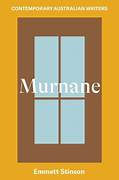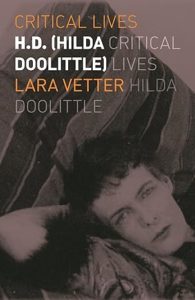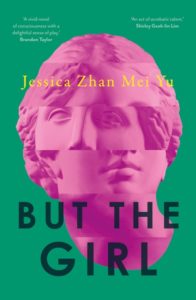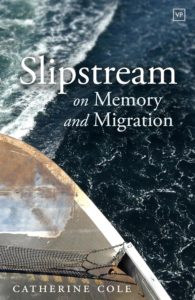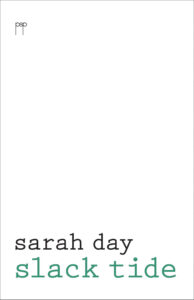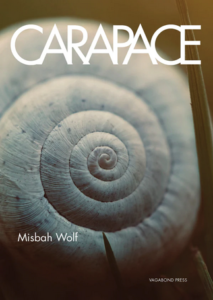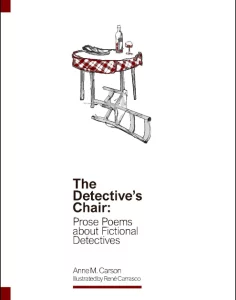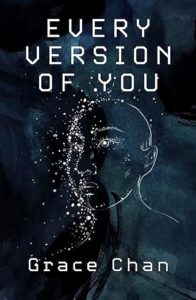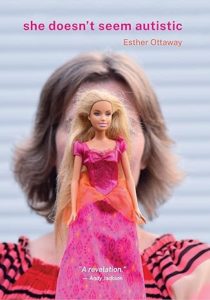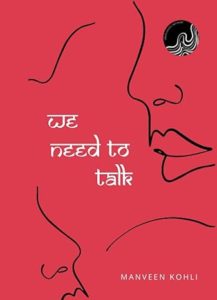Samuel Cox reviews “Murnane” by Emmett Stinson
by Emmett Stinson
Melbourne University Publishing
ISBN: 9780522879469
Reviewed by SAMUEL COX
Emmett Stinson’s Murnane offers a critical and enlightening assessment of the Gerald
Murnane’s four late fictions, and through these incredibly self-reflexive works, a reading of
the eponymous author’s entire oeuvre. Stinson’s superb introduction gives way to chapter-
length considerations of Barley Patch (2009), A History of Books (2010), A Million Windows
(2014) and Border Districts (2017), before concluding with an assessment of Murnane’s ‘late
style’. The study confirms this late style is intensely introspective and genre-bending –
somewhere between novel, memoir and essay – as Murnane seeks to retrospectively reform
and recontextualise his entire body of work.
If this then provides a faint outline of Stinson’s method and the briefest summary of his
results, I would like to focus on pursuing what I see as the two most intriguing and important
lines of investigation that underly Stinson’s study and make it utterly compelling: his
exploration of the entirely ‘singular’ phenomenon that is Murnane, and, deeply interrelated,
his recurring pursuit of the enigma that is the author’s lack of widespread recognition in the
country of his birth.
I’ll begin with the second question, as it appears, initially at least, the more straightforward to
answer. Whilst noting Murnane’s unfashionable peculiarities, which form the bones of this
study, Stinson rightly invokes Patrick White’s criticism of Australia’s aesthetic inclination
towards ‘the dreary, dun-coloured offspring of journalistic realism’ (qtd. in Stinson 15). From
the Ern Malley affair, through to the harsh local critiques of White’s early works, and similar
treatment that influenced Randolph Stow’s decision to leave the country, the cultural
philistinism of settler-colonial Australia has long cast a dark shadow over any emergent local
avant-garde. Overall, literary modernism in Australia remains a critical frame that, if not
abhorred, then has largely been ignored.
An intriguing counterpoint to Murnane is David Malouf, a writer of a similar era who achieved widespread literary fame and popularity. If we admit that Malouf’s use of modernist techniques
has a lighter and less experimental (and thus more palatable) touch, then we can also see that to answer this question, we must return to the first line of investigation I proposed and seek out a deeper exploration of what Stinson repeatedly refers to as Murnane’s ‘idiosyncratic’ and ‘singular’ nature. Brilliantly characterising Murnane as ‘a homemade avant-garde of one’ (103), Stinson reveals the unique breadth of literary influences on Murnane’s work, but it is the unique ‘homemade’ peculiarities that appear essential to understanding the riddle that is Gerald Murnane.
Stinson establishes that it is precisely Murnane’s distance – not just today but across his
career – from intellectual trends, his singular even perverse pursuits, which have opened him
to criticism; however, as his body of work has grown, these traits have increasingly set him
apart as his obsessive pursuits have made him an original, adding a unique chapter to the
literary explorations of the human condition.
It should be noted that, on the surface, many of Murnane’s concerns appear to align with the
well-established conventions of literature. J.M. Coetzee has described Murnane as a ‘radical
idealist’ and his relentless probing into the power and truth of inner imaginative worlds is not,
in and of itself, unique. Indeed, Murnane’s insistent interest in the imaginative life is in many
ways one of the timeless pursuits of art and literature; rather, it is the inimitable
idiosyncrasies of Murnane that make him utterly unique. What rises irrepressibly from
Stinson’s work is the deeply paradoxical elements that shape Murnane and fuel his fiction.
Murnane is a novelist who ‘never tried to write fiction’ (21); an avant-garde
modernist who has barely left his own state, let alone the country; a working-class writer who
persistently aestheticises reality; an author whose embrace of the ordinary often leads the
reader into sensing the mystical qualities of the extraordinary; an experimental author who is
a stickler for ‘traditional grammar’ (qtd. in Stinson 33). He is a writer who roundly criticises
literary criticism and yet Stinson notes that ‘he is technically the first author of a critical work
about the complete oeuvre of Murnane’ (16). Despite his deeply introspective explorations,
and his endless returning to the same images, scenes and themes, the authorial self remains
remote and inaccessible for Murnane. Stinson isolates a moment at the conclusion of
Murnane’s A Million Windows that represents this truth when the narrator glances up at the
window of a writer: ‘I looked up and saw… a window and behind it a drawn blind. In short, I
learned nothing’ (qtd. in Stinson 67).
This moment is echoed in the 2019 interview with Stinson that is included as something of an
afterword. Murnane retells how he became convinced that a filmmaker who had bought the
rights to Inland didn’t understand the book, so he set out to explain it: three quarters of his
way down the page he realised that even he ‘wasn’t on the right track’ admitting that, ‘I don’t
think I even know what it’s about’ (qtd. in Stinson 116). It is not everyone who is going to
read a Murnane book and enjoy it. Certainly, many in Australia weren’t ready when he started
his career. Indeed, as Stinson notes, some have even been repulsed by his interest in the
obsessions and perversions of lonely, monastic men. His work pursues a
relentless, at times forensic examination of the self through writing, even as he recurringly
acknowledges that this is in part a futile exercise: the writing self is multitudinous; both true
and false.
A casual reader who might have only encountered Murnane’s older works, particularly his
most well-known and influential work, The Plains, might question Stinson’s decision to focus
on his late career. It could even be considered – unsurprisingly, given Stinson’s approach is
deeply informed by the author’s work – something of a Murnanian conceit. However, what
uniquely emerges in Stinson’s study is how his late career works create a mirage-like
refraction of his early career works that radically reframes them. For example, aspects of The
Plains, like the filmmaker’s literary patron and its isolated ‘secular monastery’ of a manor
(Stinson 58), become linked to longstanding and recurring concerns of Murnane’s fiction.
Finally, Stinson presents a detailed argument that Murnane’s final novel, Border Districts,
reconstructs The Plains as it was originally intended – as part of a dyad or textual diptych.
New readings of The Plains are offered and whether they are superior appears beside the
point. Instead, Stinson forces us to reconsider The Plains, and indeed Murnane’s entire
oeuvre, through what he terms the ‘retrospective intention’ of Murnane’s late career works, as
the aging author attempts the daunting task of shaping his disparate body of work into the
‘seeming coherence’ of an ‘aesthetic totality’ (81). If, in reality, this totality ultimately lies
always just out of reach, like the distant horizon of the plains, then Stinson shows us that its
simulacrum is given form by its continual refraction throughout Murnane’s fiction.
We inevitably return to the lingering question of his unsure place within the literary
canon of this country. In Nicholas Birns estimation he is the ‘most Australian of writers’ and
‘the least Australian of writers’ (qtd. in Stinson 90). This is a man who has barely left the
state of Victoria, is obsessed with horse racing and currently lives in the small rural town of
Goroke in the Wimmera, Victoria. As J.M. Coetzee has noted, the underlying dialectics of
Murnane’s narrators can be traced back to the lingering imprint of Australian Irish
Catholicism. Many of the landscape images that recur across his fiction are characteristically
Australian in nature. And yet, the authors he is in conversation with not only remain classed
as ‘difficult’ by most Australian readers, but they are also distant from these shores in both
space, and, increasingly, time – Joyce, Rilke, Proust, Emily Bronte, Jorge Luis Borges, Italo
Calvino, Henry James, are a just a few that Stinson recognises.
Murnane’s long and persistent struggles with publication and readership over his career, pose
big questions over whether we can accept and support challenging and self-critical art in this
country, even when it is unfashionable. A further problematic is that it is not just new and
emerging voices who struggle for readership and attention – Australian literature as a broad
category remains criminally underread and understudied. As Ivor Indyk, Murnane’s editor at
Giramondo, has noted, ‘most of our literary tradition is out of print, undertaught and largely
unknown to the Australian public.’ It was Giramondo’s unwavering support of Murnane that
brought him out of his self-imposed retirement and enabled these four late career novels to
emerge in their desired form. If Giramondo stands out like a beacon in an Australian literary
landscape that has lost some of its lustre, then so too does Gerald Murnane – the ‘homemade
avant-garde of one’ who, after years of persistence in the wilderness, is enjoying a well-
deserved late career resurgence.
Stinson’s treatment is deeply sympathetic and yet even this importantly represents the current
moment that seemingly demands a revaluation of Murnane’s work. His claim that Murnane is
‘the most original and most significant Australian author of the last fifty years’ (104) is bold,
but international acclaim and murmurings of Nobel Prize nominations surely mean even local
critics cannot deny that Murnane now must have a place in the conversation. For those
seeking an entry point into the complexities of Murnane and his fiction, Emmett Stinson’s
Murnane presents the clear place to start.
SAMUEL COX teaches Australian literature at the University of Adelaide. His work has been published in JASAL, The Saltbush Review, Westerly, ALS, Motifs, SWAMP and selected for Raining Poetry in Adelaide. In 2022, he received the ASAL A.D. Hope Prize. He was awarded the Heather Kerr Prize, and was a joint winner of Australian Literary Studies PhD Essay Prize with Evelyn Araluen.
